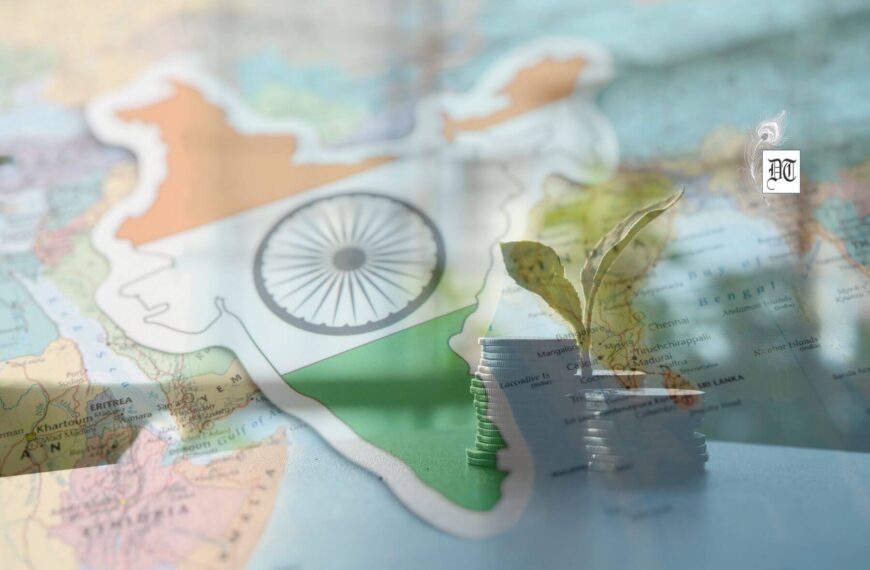The country has emerged as one of the world’s top producers of steel, mobile phones, electricity, and automobile. It mentioned that India was the world’s second-largest steel and mobile phone makers, third largest electricity generator, and fourth biggest automobile manufacturer. Incidentally, India is also the world’s second-largest cement producer, fourth-biggest coal miner, and fifth largest oil refiner. Here’s a report, for Different Truths.
It feels good to note the Union Law and IT Minister, Ravi Shankar Prasad’s recent tweet on India’s praiseworthy progress in industrial production. The country has emerged as one of the world’s top producers of steel, mobile phones, electricity, and automobile. It mentioned that India was the world’s second-largest steel and mobile phone makers, third largest electricity generator, and fourth biggest automobile manufacturer. Incidentally, India is also the world’s second-largest cement producer, fourth-biggest coal miner, and fifth largest oil refiner. India has already emerged as the world’s second-largest stainless steel producer after China, but ahead of Japan, in 2016, according to the International Stainless Steel Forum. India’s stainless steel production rose by 10 percent over the 2015 output to 3.32 million tons. India is expected to soon overtake Japan in mild steel output as well. India’s crude steel production grew by 6.20 percent to 101.40 million tonnes (MT) in 2017 compared to 95.50 MT in the previous year, a World Steel Association report shows. Japan witnessed a negative growth as its crude steel output declined by 0.1 percent to 104.7 MT in 2017.
However, the country still has a long way to go if it wants to hold a dominant position in the world of industrial production, manufacturing, and mining. It is too far behind the top spot. For instance, China, the world leader in steel output, produced 831.7 MT in 2017, almost eight times more than India’s production. China accounted for nearly 50 percent of the world steel output of 1,691.2 tonnes, last year. Its steel production is still growing. Yet, it is not a mean achievement for India which has overtaken the US in mild steel production. The country is now looking to bag the second spot from Japan, maybe this year itself. Several government initiatives like ‘Make in India’, smart cities, focus on improving sanitation and waste management facilities, building new infrastructure are expected to give a strong push to the country’s growing stainless-steel industry.
Similarly, India is the world’s third-largest electricity generator after China and the US. India generated around 1,160.1 billion units of electricity in 2016-17, up 4.72 percent from the previous year. The country is behind only China which produced 6,015 terrawatt hours (TWh. 1 TW = 1,000,000 megawatts) and the US (4,327 TWh). India is ahead of Russia, Japan, Germany, and Canada. However, it may be noted that the population of China, the world’s second-largest economy, is almost the same as India’s. As in the case of steel, China is also too far ahead of India in electricity generation. India’s global position as the sixth largest economy — after the US, China, Japan, Germany and the UK — would, in effect, appear to be an overstatement if it is compared with its massive population of around 130 billion and per capita consumption of whatever it produces.
Surely, India can do a lot better. Unfortunately, the country lacks a national political will to emerge as a global leader in industrial production. This is negatively impacting its industrial policy initiatives that are often delinked with ground realities. To give an example, the government unveiled a new steel policy, last year, that seeks to enhance the country’s steel production capacity to 300 million tonnes (mt) by 2030-31 from around 125 mt now. The projected investment is Rs10 lakh crore. The policy does not identify possible entrepreneurs, project locations and possible sources of such massive funds. The ground reality is a number of the country’s steel mills, with a combined capacity of nearly 15 million tonnes, have currently turned ‘sick’ and several of them have filed bankruptcy petitions. A 20-million-tonne capacity steel plant, originally proposed by South Korea’s largest steelmaker — Pohang Steel (POSCO) — in Odisha, could not see the light of the day in the last 20 years, mostly for political reasons.
Over 30 years ago, Nippon Steel, one of the world’s famous steel producers, offered to tie up with the state-owned sick Indian Iron at Burnpur to build a big capacity. A centre-state political cross current, involving Congress and CPM, dumped the IISCO-Nippon Steel tie-up opportunity. Incidentally, the government had earlier junked a Tata Steel proposal to associate with Nippon Steel in the 1970s to more-than-double its production. Indira Gandhi’s Congress government at the Centre, then, would not allow Tata Steel to grow. Paradoxically, China, the world’s largest steelmaker now, produced less steel than India in 1950.
The unpalatable truth is politics and political parties — including the parties in power at the Centre and states and also those outside — are holding back India’s large investment projects, both in the private and public sectors. They won’t allow new coal and bauxite mines to come up. They won’t allow large new power plants, including nuclear and hydel, and even transmission facilities. They won’t allow nonferrous metal smelters, even with adequate anti-pollution measures. They will delay new infrastructure projects. Anti-development programmes and political re-engineering merrily move on. Honestly, India and its committed entrepreneurs were rarely in a position to chart a healthy economic future for the country.
The latest credit for India’s progress in manufacturing cellphone instruments and cars should go largely to foreign investors. Even today, India, the world’s second-largest cellphone user, does not manufacture a memory chip — dynamic or random. Inexplicably, the government has been planning to have a large semiconductor plant for almost 25 years without success. Negative government policies and centre-state political discord have sacrificed projects after projects. They pushed the country for import of such products as solar equipment, mobile phone instruments, fashion wear, toys and cheap home decorative. The governments have done little to genuinely claim of making a worthwhile contribution to India’s industrial growth story.
Nantoo Banerjee
©IPA Service
Photo from the Internet





 By
By

 By
By
 By
By